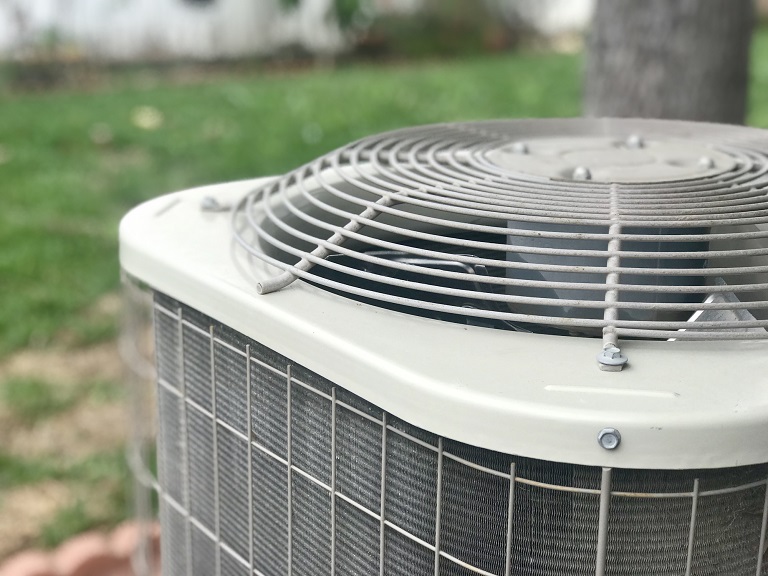
What you’ll pay for furnace repairs depends on many factors, including what parts are malfunctioning, where you live, and even the time of day. Here’s a breakdown of what can go wrong with your furnace and the cost to fix those issues.
Because moisture is not your home’s friend


Dry mode on AC systems is used to reduce humidity levels without cooling too much.
Rainy time periods and season changeovers are ideal times to run dry mode.
Using dry mode is energy efficient since the fan is at lower speeds and cycles on and off.
Lowering humidity levels in your home with dry mode can prevent moisture damage, mold, and mildew.
In the realm of HVAC systems, the many different settings and modes are designed to keep you comfortable while promoting better energy efficiency in your home. But all these settings can be confusing. Among these, the “dry” mode stands out, but what does “dry” mean on your AC system, and when should you use it?
Dry mode on an air conditioning system reduces humidity levels in the air without excessively cooling the room. When you switch your AC to dry mode, it functions primarily as a dehumidifier. Unlike the traditional cooling mode, where the AC unit runs continuously to lower both temperature and humidity, the dry mode only focuses on removing moisture from the air.
In this mode, the AC's compressor and fan operate at a lower speed, allowing the unit to draw moisture from the air more efficiently. Once the desired humidity level is reached, the compressor may cycle on and off to maintain it, ensuring a comfortable environment without overcooling.
The decision to use your AC’s dry mode depends on your climate, indoor humidity levels, and personal comfort preferences. However, there are specific scenarios where using the dry mode can be beneficial:
In humid climates or during the rainy season, indoor humidity levels can soar, leading to a sticky and uncomfortable atmosphere. Running the AC in dry mode helps alleviate this discomfort by reducing moisture levels in the air.
Since dry mode consumes less energy compared to the standard cooling mode, it can be a cost-effective option, especially when cooling isn't necessary but humidity control is desired.
Excess moisture in the air can foster mold and mildew growth, resulting in musty odors. Running the AC in dry mode helps prevent such odors by maintaining optimal humidity levels.
Using dry mode on your AC system offers several benefits:
More energy efficient and eco-friendly: By focusing solely on dehumidification without cooling, the dry mode of air conditioning consumes less energy, leading to lower utility bills and reduced environmental impact.
Lower humidity and enhanced comfort: Removing excess moisture from the air creates a more comfortable indoor environment, reducing that sticky feeling associated with high humidity levels. After all, no one likes having to peel their legs off of every chair they sit in during the summer.
Prevents moisture damage: Managing humidity levels helps prevent moisture-related damage to furniture, electronics, and other household items. It also inhibits the growth of mold and mildew, promoting a healthier living space.
Quieter operation: Since the AC's compressor operates at a lower speed in dry mode, it tends to produce less noise, providing a quieter cooling solution, especially during nighttime use.

Switching your AC to dry mode is a straightforward process:
Locate the mode selection button on your AC remote control or thermostat.
Press the button until you reach the dry mode setting.
Adjust the temperature if necessary, although in dry mode, the temperature is often fixed to prevent overcooling.
Sit back and relax. Once activated, the AC will begin dehumidifying the air, creating a much more agreeable indoor environment.
If you have trouble switching to dry mode or experience issues with a malfunctioning AC system, you may want to enlist the help of a local air conditioning installer who can help get your HVAC system up and running again.
In addition to the dry mode, modern AC systems often offer various other modes to suit different preferences and conditions. Some common modes include:
Cool mode: Standard cooling mode where the AC operates to lower both temperature and humidity.
Fan mode: Circulates air without cooling or dehumidification, which is useful for air circulation or when slight cooling is desired.
Sleep mode: Adjusts settings for overnight comfort by gradually increasing temperatures to save energy.
From average costs to expert advice, get all the answers you need to get your job done.

What you’ll pay for furnace repairs depends on many factors, including what parts are malfunctioning, where you live, and even the time of day. Here’s a breakdown of what can go wrong with your furnace and the cost to fix those issues.

Discover the factors influencing air duct replacement costs in Atlanta, GA. Learn how to save money and make an informed decision for your home's comfort.

What you’ll pay in Atlanta, Georgia, for furnace repairs depends on many factors. Here’s a breakdown of what can go wrong and the cost to fix those issues.

Discover the average air handler replacement cost, including labor and materials, plus expert tips to help you budget and save on your HVAC upgrade.

With so many types of furnaces out there, how do you know which one is best for you? Explore our guide to the five main types and get your home warmed up.

Do you have a clogged AC drain line? We dig into the reasons behind those pesky blockages and how to clear them for optimal AC performance.